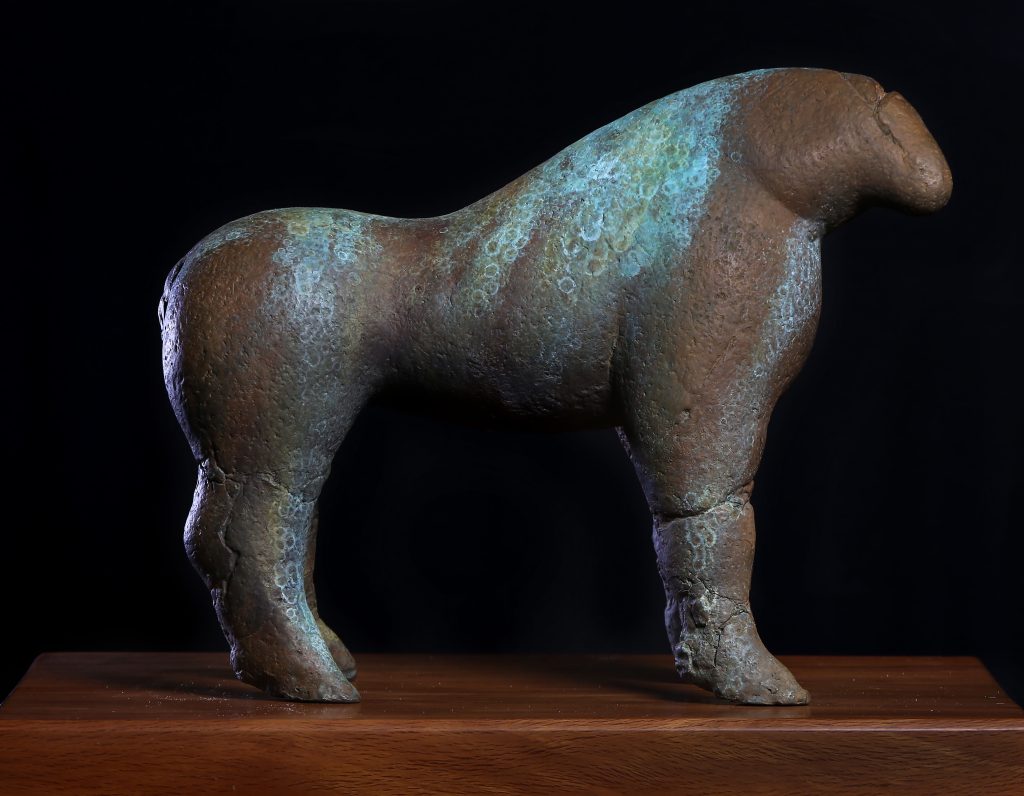For William Schaaf, art has always been more than a craft—it’s been a journey of self-exploration, renewal, and a profound bond with nature. Now in his eighth decade, Schaaf has dedicated over 60 years to capturing the essence of the equine form in painting and sculpture. His work goes beyond mere representation, drawing from the traditions of Zuni and Navajo fetish and doll makers whose cultural influence continues to shape his creative outlook.
His connection to horses began with a moment of realization that became the foundation of his artistic path. To Schaaf, the equine form represents something spiritual—a presence that allows him to navigate his inner world. His process is not just about artistic expression; it is an act of healing. Schaaf describes his practice as a way to restore himself, seeing art as a tool for personal transformation. This philosophy, instilled early on, reinforced his belief that creativity is a means to uncover and understand one’s true nature. Even after decades, this guiding principle remains at the heart of his work.
Relic Bronze, 12/25 edition is a sculpture that embodies Schaaf’s lifelong exploration of the equine form. This bronze horse stands as a relic of time, a form stripped down to its essence. There are no unnecessary details, no excessive flourishes. Just weight, texture, and presence. The surface is raw, almost ancient, like something unearthed from a forgotten civilization. The patina adds to this impression, giving it a weathered look, as if it has existed long before Schaaf brought it to life.

The piece reflects his deep respect for the traditions that inspire him. Schaaf has long acknowledged the influence of Zuni and Navajo fetish carvings in his work, and it shows here. The horse is not an anatomical study but a spirit made tangible. Its rounded, simplified form emphasizes the animal’s power and endurance, rather than its movement or realism. The head, tucked slightly downward, gives the sculpture a contemplative quality, as if the horse carries the weight of history within it.
Unlike some of his other pieces, Relic Bronze does not seek to be graceful or delicate. It is sturdy, grounded. The thick legs and broad body give it a presence that commands attention. There is a quiet strength here, a confidence in its own form. Schaaf is not interested in capturing a fleeting moment but rather something eternal. This horse does not gallop or rear; it simply exists, and that is enough.
Texture plays a crucial role in how the sculpture communicates. The surface of Relic Bronze is rough, uneven, almost pitted. This is not the polished smoothness of classical bronze sculptures. Instead, it feels aged, as if shaped by time itself. The greenish patina creeping across the surface suggests oxidation, reinforcing the idea of the horse as an artifact. It could have been buried for centuries, only now rediscovered.
This sense of timelessness aligns with Schaaf’s philosophy. He has often spoken about art as a form of healing, both for himself and for others. Relic Bronze fits within this belief. It carries a kind of stillness, an invitation to pause and reflect. The weight of the bronze is a reminder of permanence, of endurance. It is not a work meant to be glanced at and forgotten but one to be lived with, studied over time.
Schaaf’s decision to produce Relic Bronze as a limited edition further emphasizes its significance. Each casting carries the same careful intent as the first, ensuring that the essence of the piece is preserved. The numbering of the edition, 12/25, makes it clear that while others exist, each retains its own unique presence. This approach aligns with the traditions of fetish carvings, where objects are not simply reproduced but imbued with meaning.
For those familiar with Schaaf’s work, Relic Bronze is both a continuation and a culmination. It draws from the same well of inspiration that has fueled his art for decades, yet it also distills his vision into something essential. The sculpture does not rely on movement or detailed realism to communicate its power. Instead, it stands firm in its own simplicity, offering a quiet but undeniable presence.
In a way, Relic Bronze is Schaaf himself. At 80 years old, he has stripped away what is unnecessary, leaving only what matters. His art has always been about seeking, about finding something true within the process. This sculpture embodies that search. It is a relic not because it belongs to the past, but because it carries something timeless within it. And like all of Schaaf’s work, it exists not just to be seen but to be felt.

